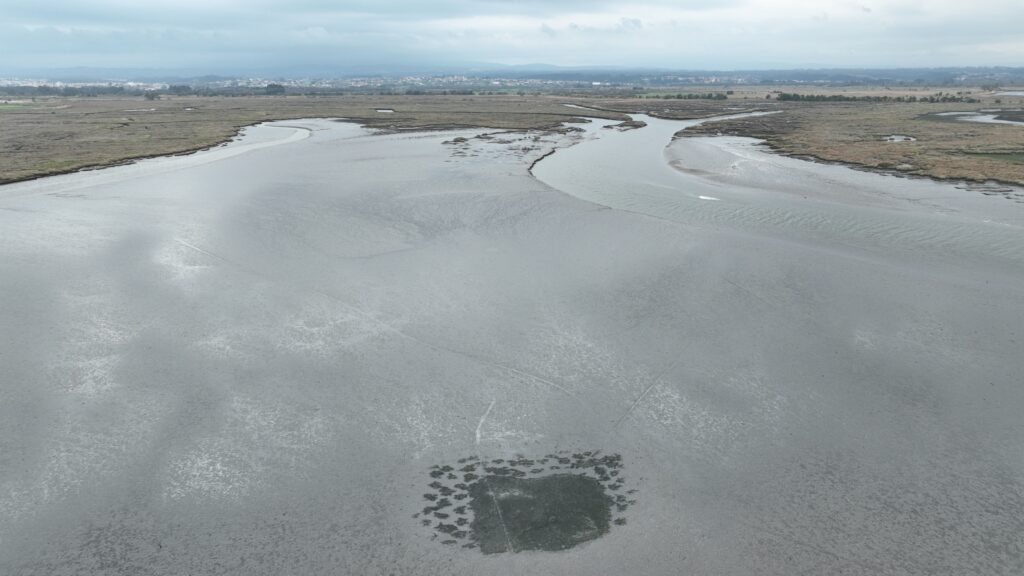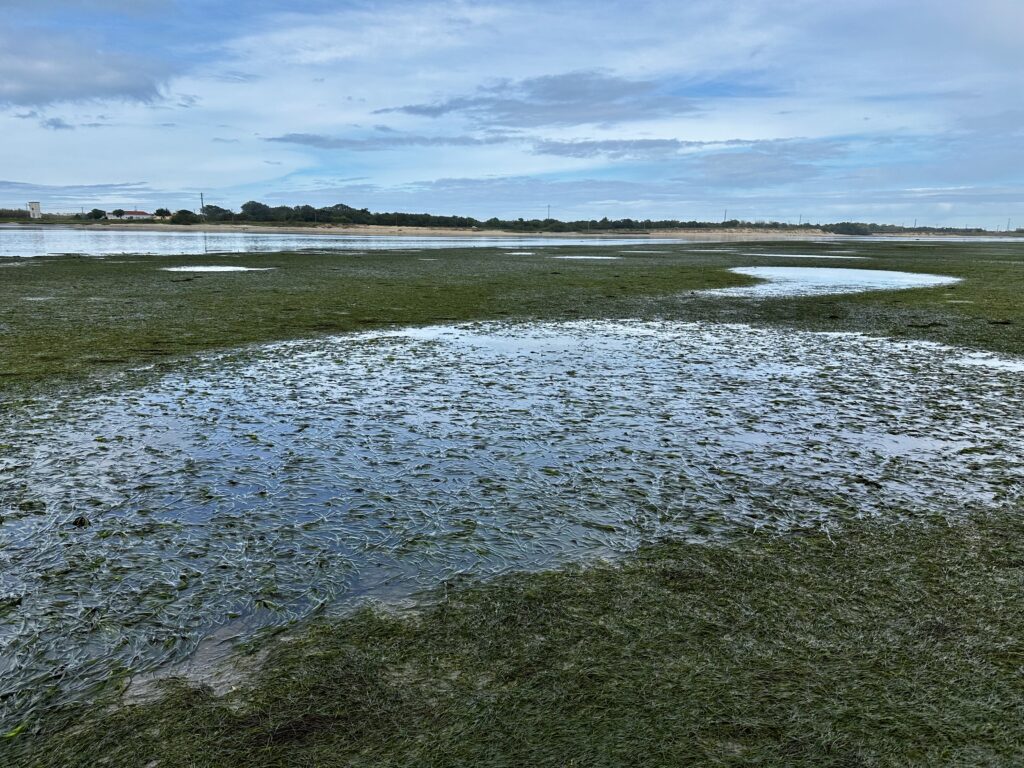RemediGrass Project: Seagrasses (Zostera noltii and Zostera marina) have historically played a vital role for the local communities around the Ria de Aveiro lagoon. These plants served as nurseries for numerous species that supported local economies through fishing and shellfish harvesting. Additionally, they were used as natural fertilizers for agricultural soils. Known locally as “moliço”, these seagrasses also inspired the name of Aveiro’s iconic traditional boats, the “moliceiros”.
Despite their ecological and cultural significance, seagrass coverage in the lagoon has been steadily declining over time. The RemediGrass Project aims to restore some of these lost areas by reintroducing Nanozostera noltii. As a starting point, the project focuses on using this seagrass species to restore degraded areas with contaminants by uncontrolled effluent discharges. To date, approximately 300 square meters have been restored.
Context.
The seagrass species Zostera noltii and Zostera marina were once abundant in the Ria de Aveiro, thriving in intertidal and subtidal zones, respectively. Over time, their coverage has significantly decreased due to intensive human activities in the lagoon and the uncontrolled discharge of effluents.
While some well-established seagrass patches remain within the Ria de Aveiro, other areas have experienced complete disappearance. A notable example is Laranjo Bay, an inner bay spanning approximately 2 square kilometers. This area suffered decades of industrial effluent discharges, resulting in a well-defined contaminant gradient that persists to this day.
Vision.
The RemediGrass Project seeks to restore a degraded ecosystem characterized by high levels of sediment contamination. To achieve this goal, the project has assembled a multidisciplinary team tasked with monitoring the benefits and impacts of seagrass transplantation across geological, chemical, physical, and biological dimensions. The remediation, rehabilitation, and potential full restoration of this area could serve as a model for other degraded systems worldwide.


LIFE SeagrassRIAwild: Following the incipient resurgence of Zostera marina in the Ria de Aveiro after decades of not being recorded, the LIFE SeagrassRIAwild project aims at taking decisive steps to reverse its current conservation status in this coastal lagoon through the co-development of cost-efficient and policy relevant NbS. The development of seagrass mariculture in repurposed salt extraction tanks will support the plant and seed needs for restoration, as well as social engagement to enable it. The project will further explore innovative Nature-base solutions (NbS) to potentiate synergistic effects of seagrass conservation efforts and system management needs, namely related with maintaining channel navigability and reducing periodic dredging requirements.
Context.
The resurgence of Z. marina in the system indicates favourable conditions for restoration and recolonization plans, and makes LIFE SeagrassRIAwild, both relevant and timely, as this is the momentum to actively support this emergent passive recovery. The small scale of discovered patches, however, excludes its use for restoration purposes.
Vision.
The project proposes a large-scale restoration program with negligible effects on existing natural meadows, through the development of seagrass mariculture to support the plant and seed needs for rewilding. It follows a transdisciplinary approach involving academia, authorities, management agencies, local administration, end-user associations and citizens in the co-design, prioritization and implementation of restoration actions, at a large scale and using targeted and adaptable Citizen Science initiatives and synergies with other national and EU initiatives.
LIFE SeagrassRIAwild will further explore innovative NbS to potentiate synergistic effects of seagrass conservation efforts and system management needs which, if proven effective, have the potential to become an innovative management service/product for port authorities, private marinas and management agencies.

LIFE SeagrassRIAwild has been running from 2023 and is Co-funded by the European Union’s LIFE+ Programme, under Grant Agreement No. 101114362.
Location
CESAM,
Edifício 3, piso 5
Campus Universitário de Santiago,
Universidade de Aveiro
3810-193 Aveiro, Portugal
